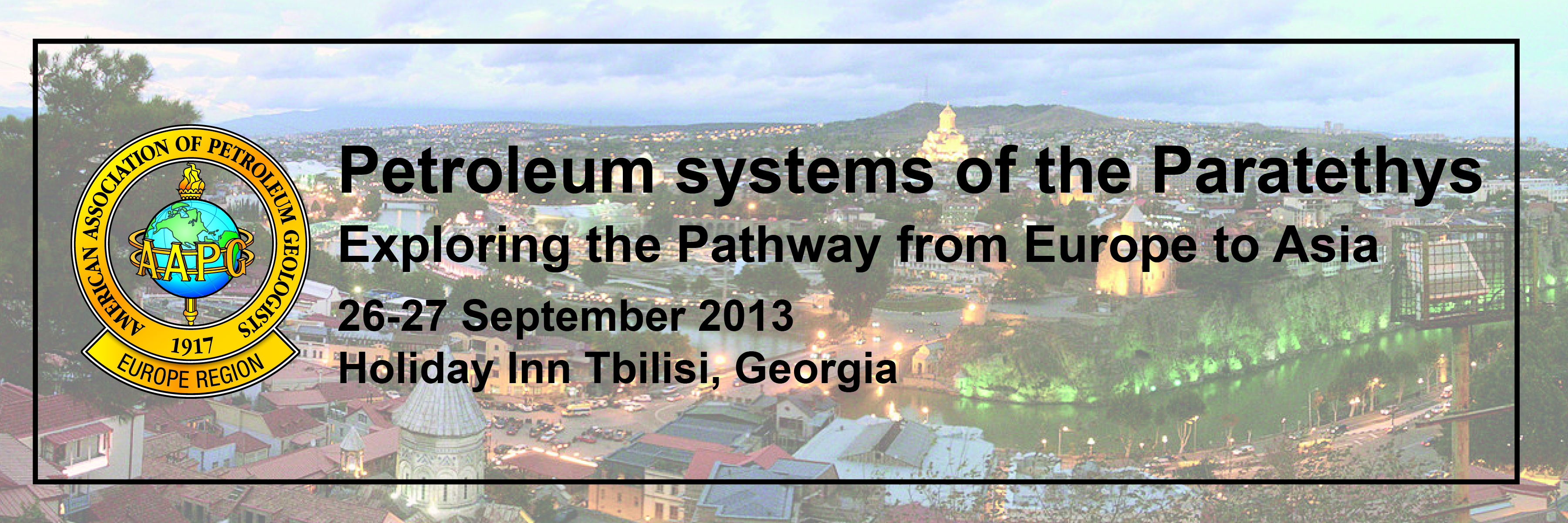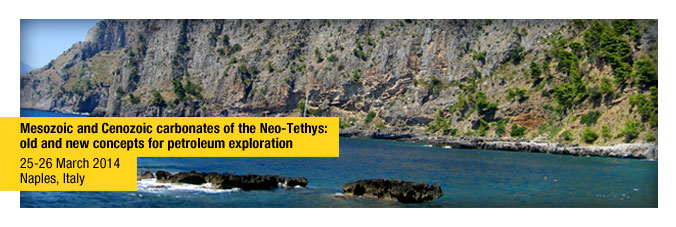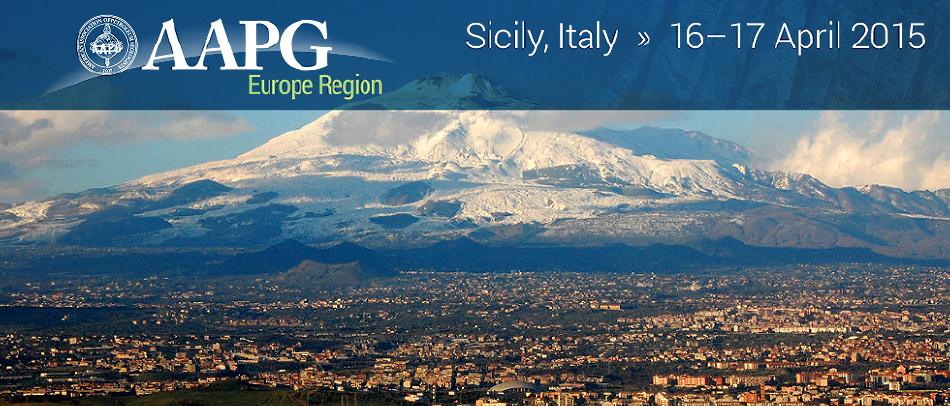
The goal of this Geoscience
Technology Workshop (GTW) is to promote an open discussion of the state-of-art
of unconventional shale gas exploration and development. The forum is
intended to promote collaboration on the various aspects of both scientific and
commercial development and exploitation of shale gas in Europe with analogous
comparisons to worldwide shale plays. A range of session topics has been
designed to integrate detailed observations and perspectives from
reservoir analysis and characteristics of shale plays to shale deposition and
lithology.
|

On behalf of the Organizing and Advisory Committees,
it gives us great pleasure to invite you to join us in Tbilisi, Georgia, for
the AAPG European Region Technical Workshop to be held from 26-27 September
2013.
The theme we have chosen for this conference,
“Petroleum systems of the Paratethys: Exploring the
Pathway from Europe to Asia” refers to the
hydrocarbon exploration understanding in a very unique set of basins stretching
from the Alps to the Caucasus and beyond. Our Committees worked hard putting
together a strong technical programme addressing various aspects of our
collective understanding of the petroleum systems in this large geographic
area. We have also put an emphasis on having a healthy mix of professionals
from both the industry and the academia.
|
 This event took place from the 25-26 March 2014 in the beautiful city of Naples, located at the doors of the southern Apennines, a carbonate dominated fold-and-thrust belt where the largest onshore Europe oil complex was discovered in the early 90’s (the Val d’Agri and Tempa Rossa oilfields).
The reservoir in these fields is held in Mesozoic and Cenozoic carbonate sequences.
After decades of intensive research on carbonate rocks and depositional systems, the 3D characterization and modeling of carbonate reservoirs still pose great challenges. Effective solutions to these challenges would carry huge economic impact in terms of appropriate field development plans of HC discoveries, additional recovery (EOR and IOR) from mature carbonate reservoirs successful exploration and development of new carbonate plays.
|
 Fractured reservoirs represent
both a challenge and an extremely valuable hydrocarbon resource. Although the
resources are extensive, production from these reservoirs is hampered by our
inability to optimize and forecast their performance. Amongst the key factors
controlling performance are the location, orientation, permeability,
connectivity and conductivity of faults and other fractures. It has been
pointed out repeatedly by various contributors that in order to increase our
success in developing these resources the integration of data from a variety of
disciplines is necessary. More recently the importance of outcrop based,
multi-scale structural studies has been reemphasized as being paramount for
improving our understanding of fault and fracture networks in the subsurface.
The conference will focus on several aspects of fractured
reservoir characterization and it aims to bring together geoscientists and
engineers from the industry and academia to share knowledge and lessons learned
and to discuss options for future research. The session themes aim to span
several scales of observation from the micro to the regional scale and draw on
experience from different tectonic settings.
|

Many factors and processes contribute to
imparting an extraordinary complexity to carbonate reservoirs and source rocks.
This unique complexity makes exploration and production of the huge petroleum
resources hosted in carbonate sequences a very challenging task.This meeting follows the success of the
conference held in Naples in April 2014 and aims at bringing together experts
of different disciplines from the academia and the oil and gas industry.We invite you to share your experience on new
approaches, new tools and new ways of integrating geological and geophysical
information that can help in reducing the uncertainties related to the
characterization and modeling of carbonate sequences and reservoirs.
|

This Geosciences Technology Workshop is the first event,
hosted by AAPG Europe, to be held in Lithuania. The workshop will be based
around the theme: “Hydrocarbon Exploration in Lithuania and The Baltic Region” and
will cover everything from European basin modelling to carbonate sedimentology to
offshore developments in the Baltic Sea. Taking place over two full days, we
aim to bring together professionals from Industry and Academia to analyse,
discuss and launch perspectives for increased exploration in this attractive
region.
|

The geothermal potential of the global petroleum
industry dwarfs the global geothermal power industry by perhaps a factor of
ten. Rudimentary calculations based upon the cumulative flow rate and
temperature of unwanted co-produced water indicate that the wasted power
generation capacity could be as much as 100 GW. However, it is not just
the unrealised geothermal potential of petroleum production which could bring
these two geoenergy industries together but the opportunities for exchange of
technology and best practises. Seismic is a staple technology of both the
petroleum and geothermal industries but it is used in different ways.
Continuously monitored micro-seismic activity is used to characterise
geothermal developments while 3D and time lapse repeat seismic surveys are
pre-eminant in the petroleum industry. Drilling and wireline tools
developed for high temperature geothermal energy developments might
easily be applied in high temperature, high pressure petroleum exploration and
production and technology developed for oil and gas could find a new market in
geothermal. And, underlying all of this, the basics of exploration,
appraisal, development and production geoscience are common to both geothermal
and petroleum industries.
|


